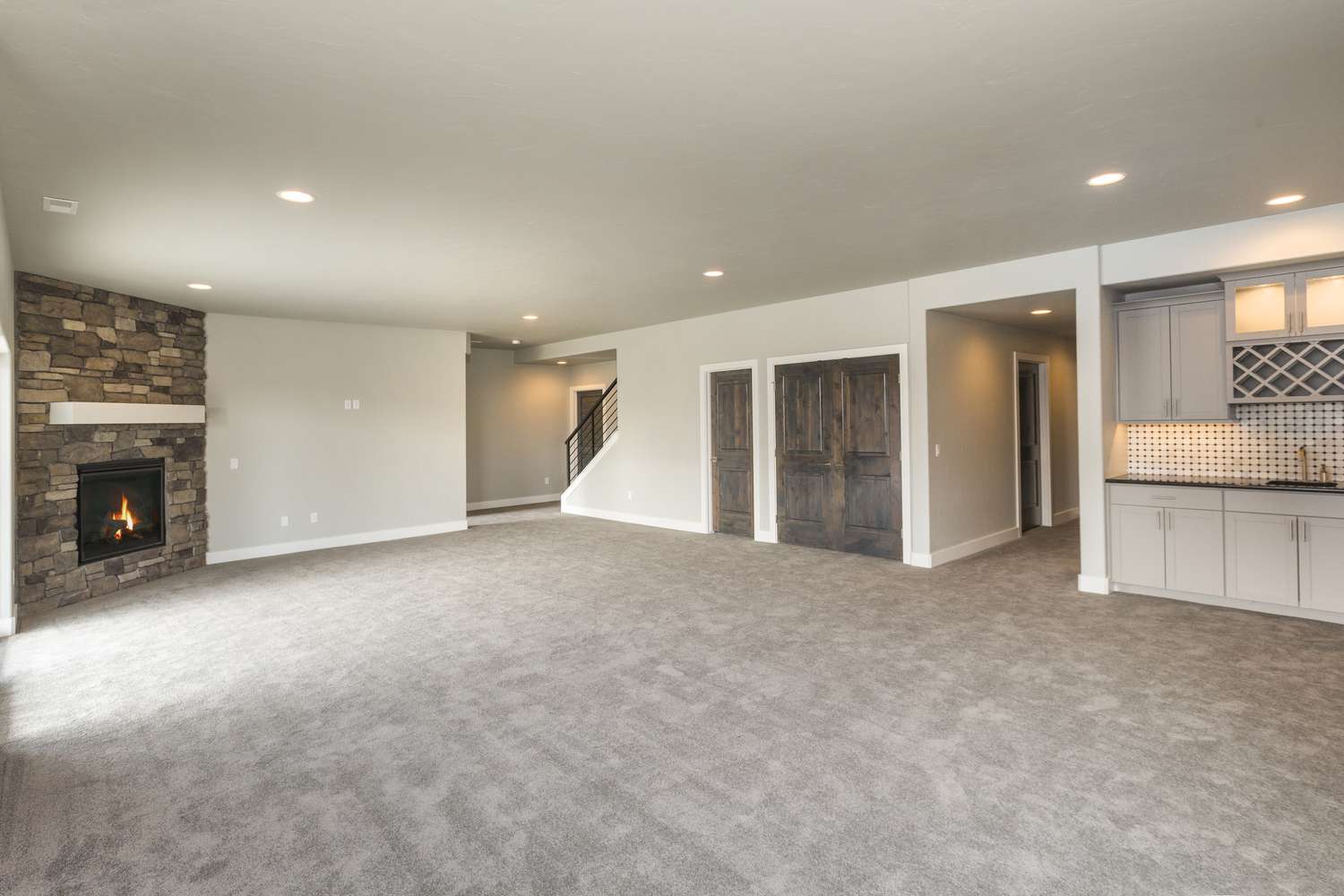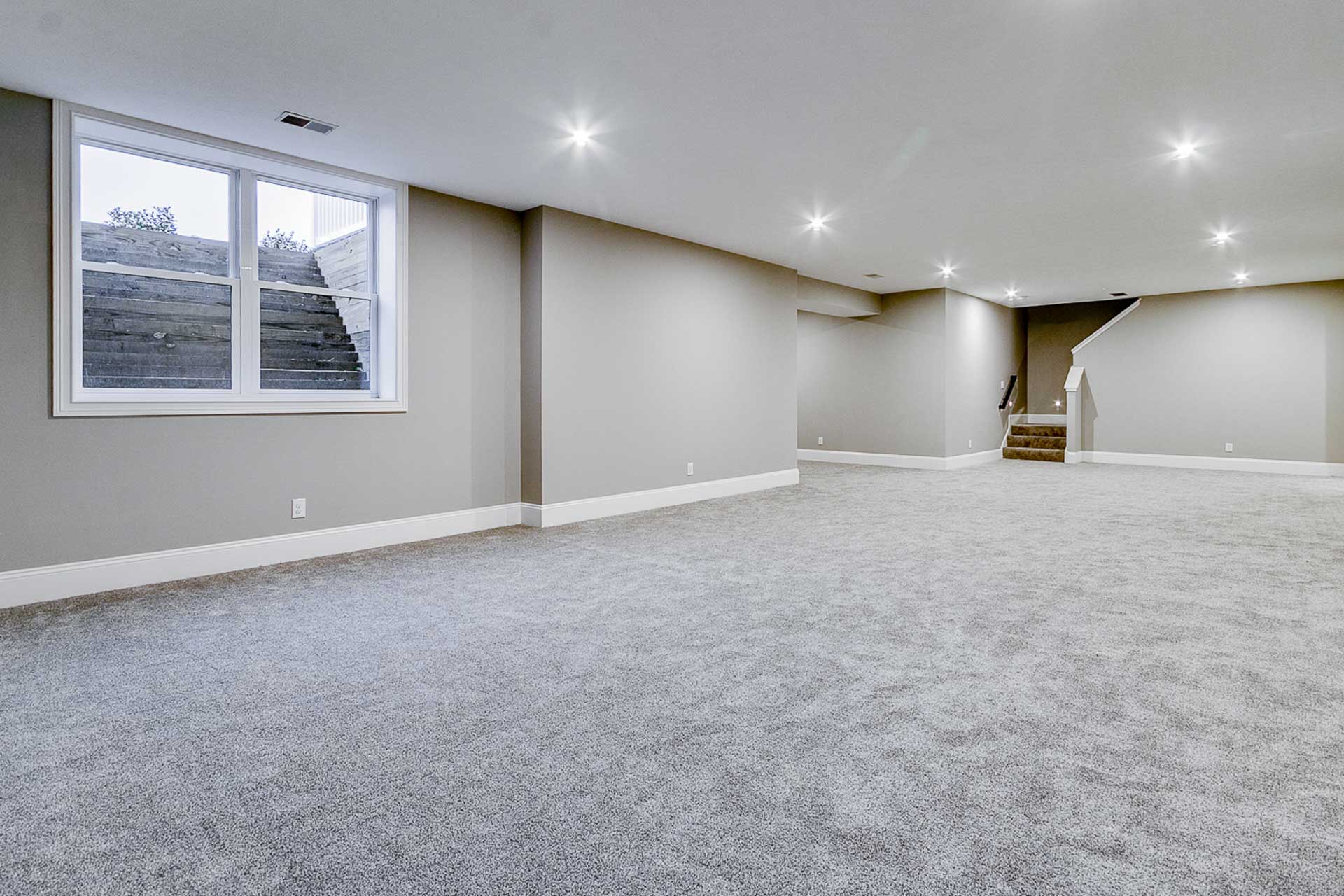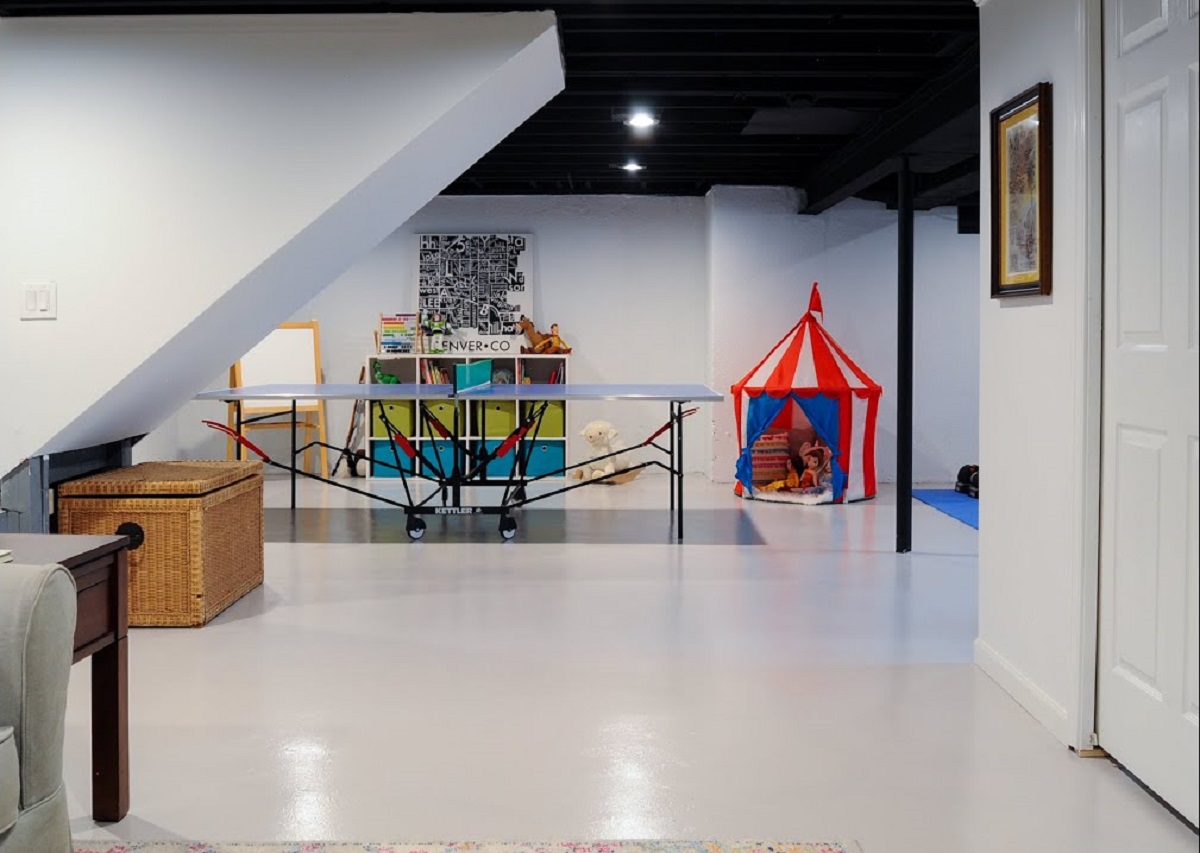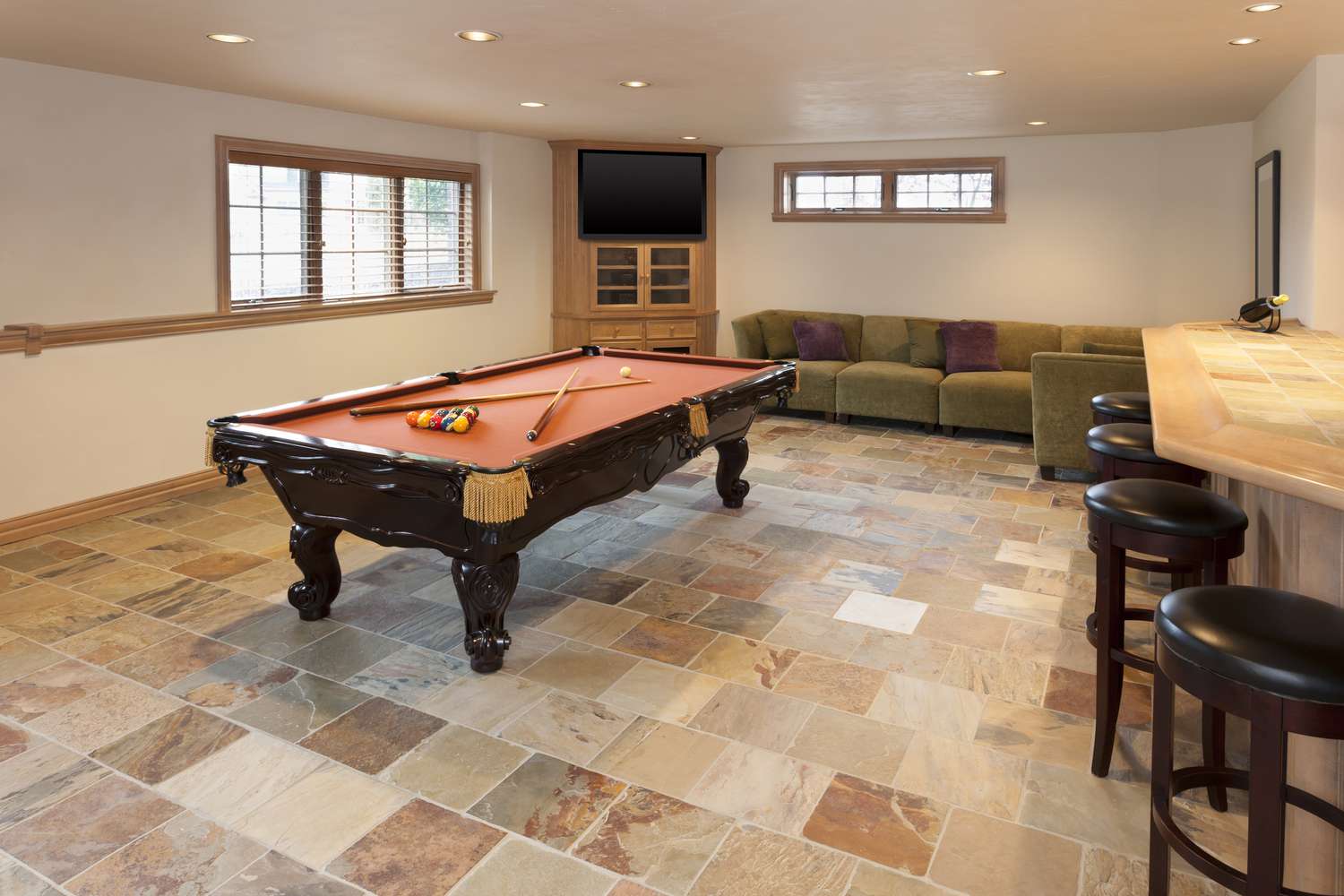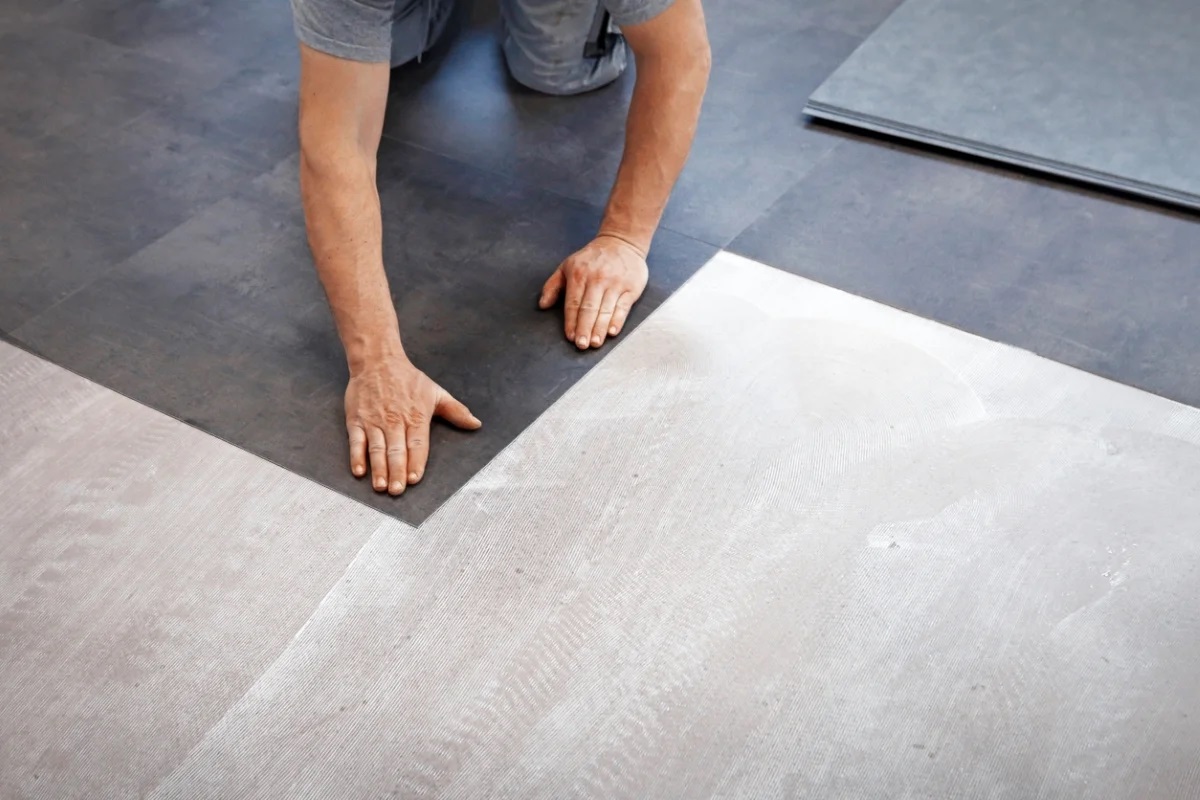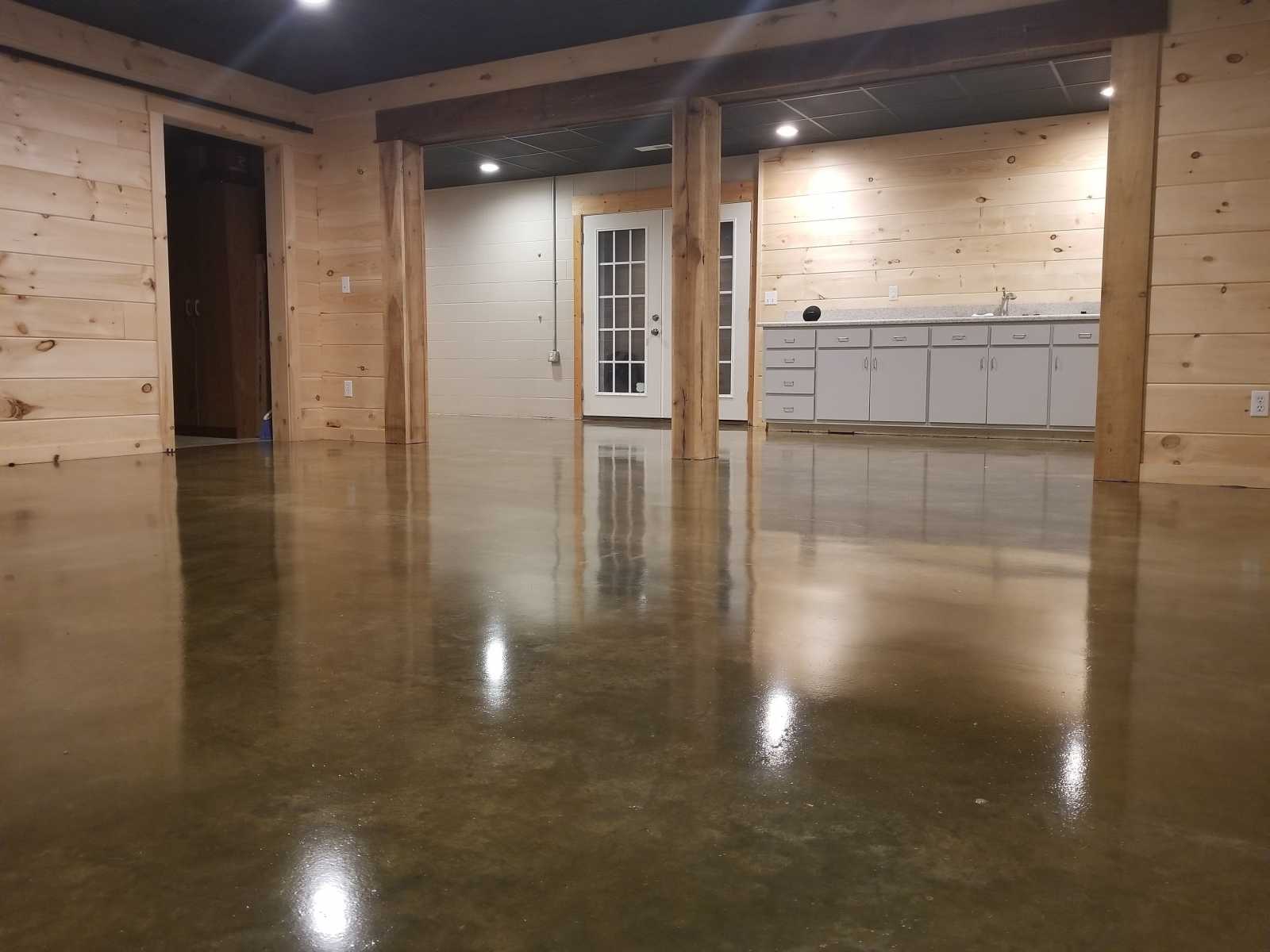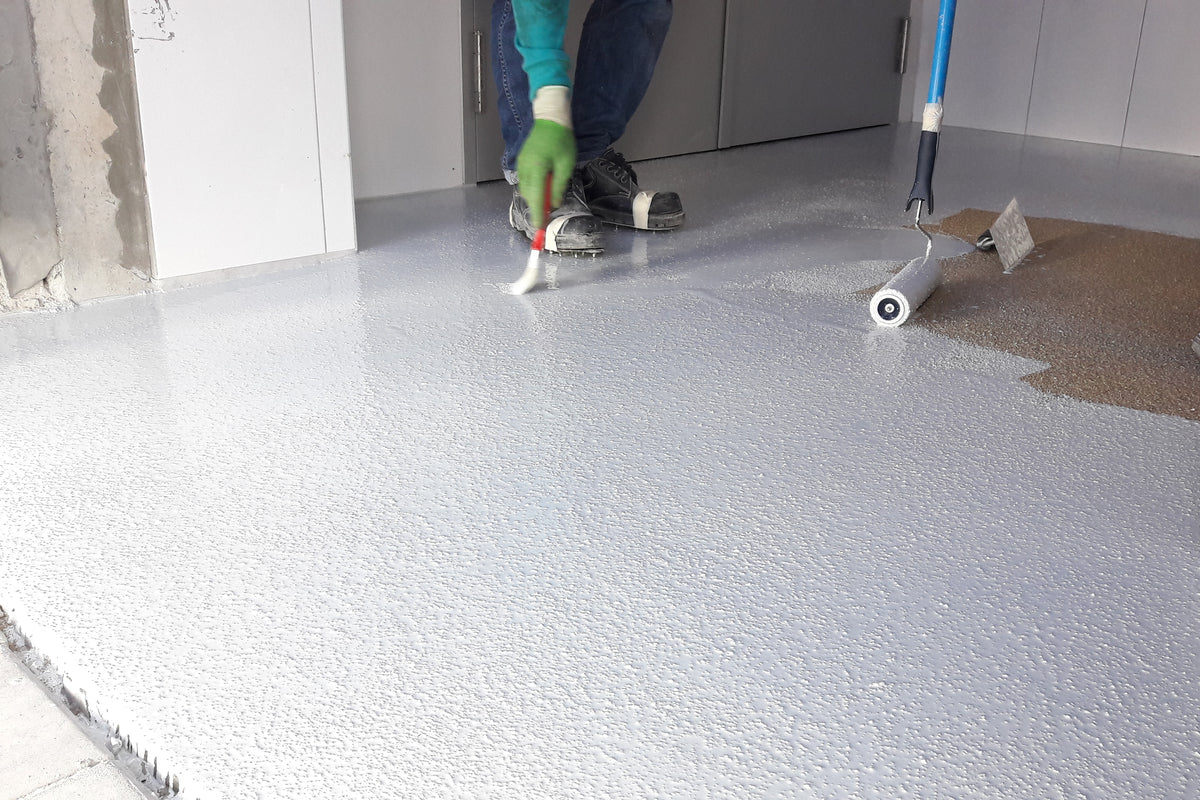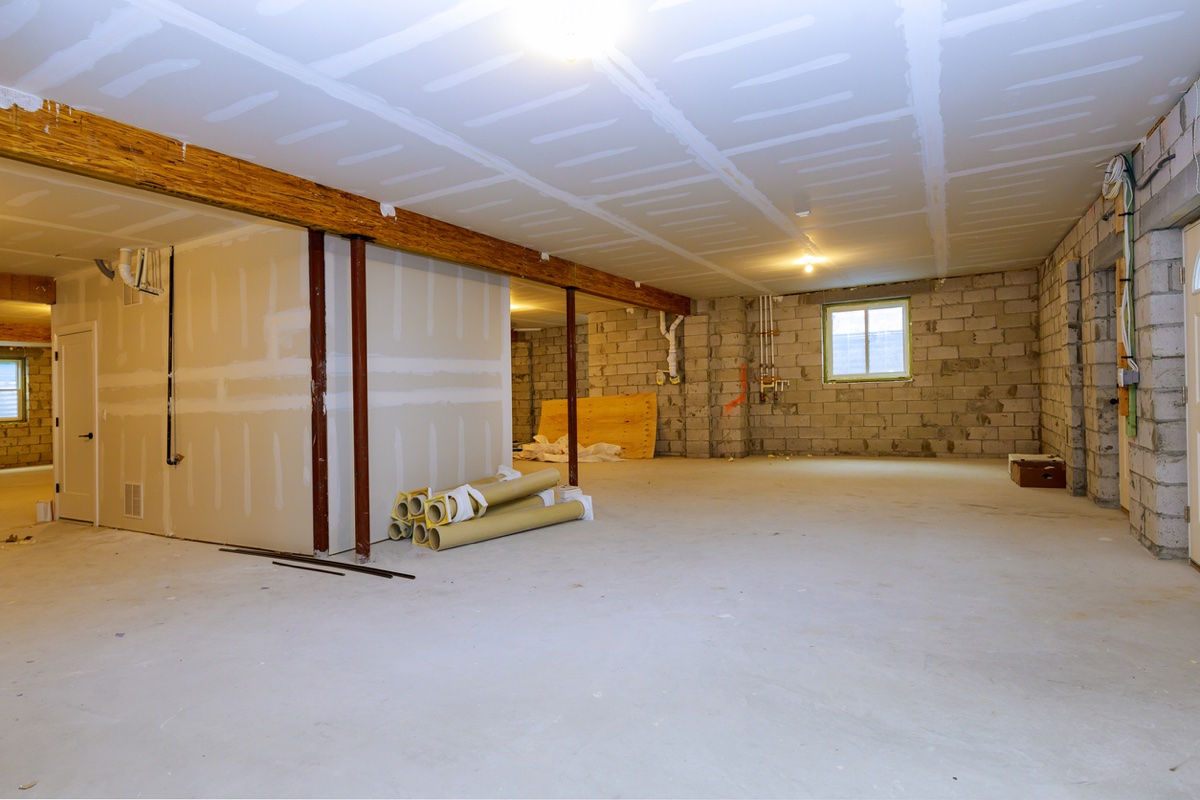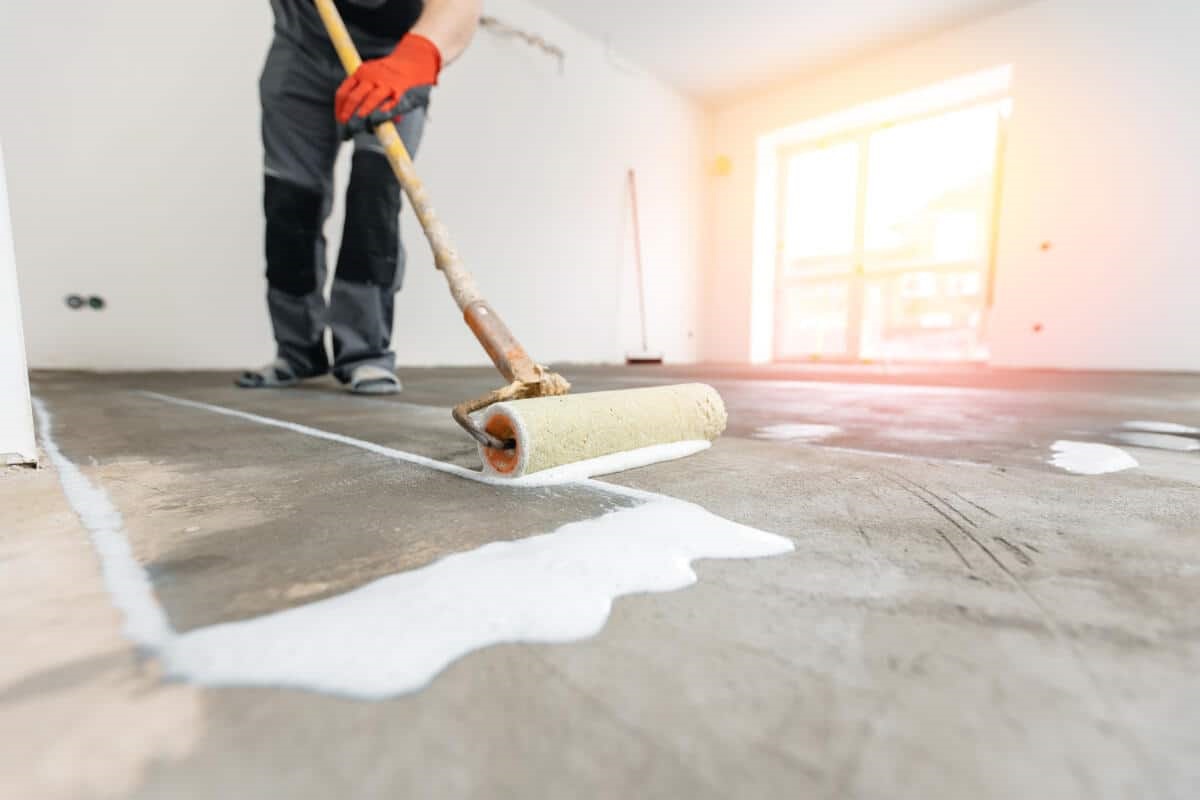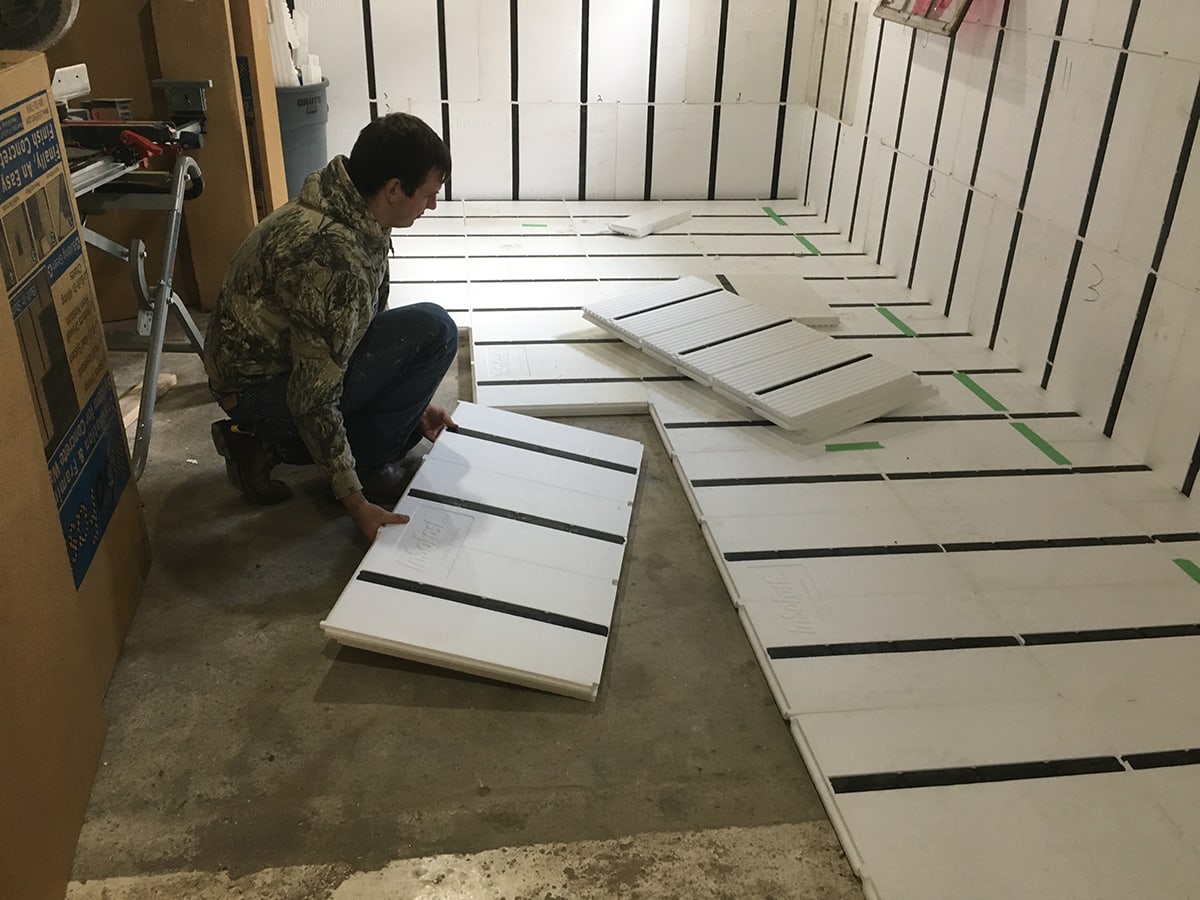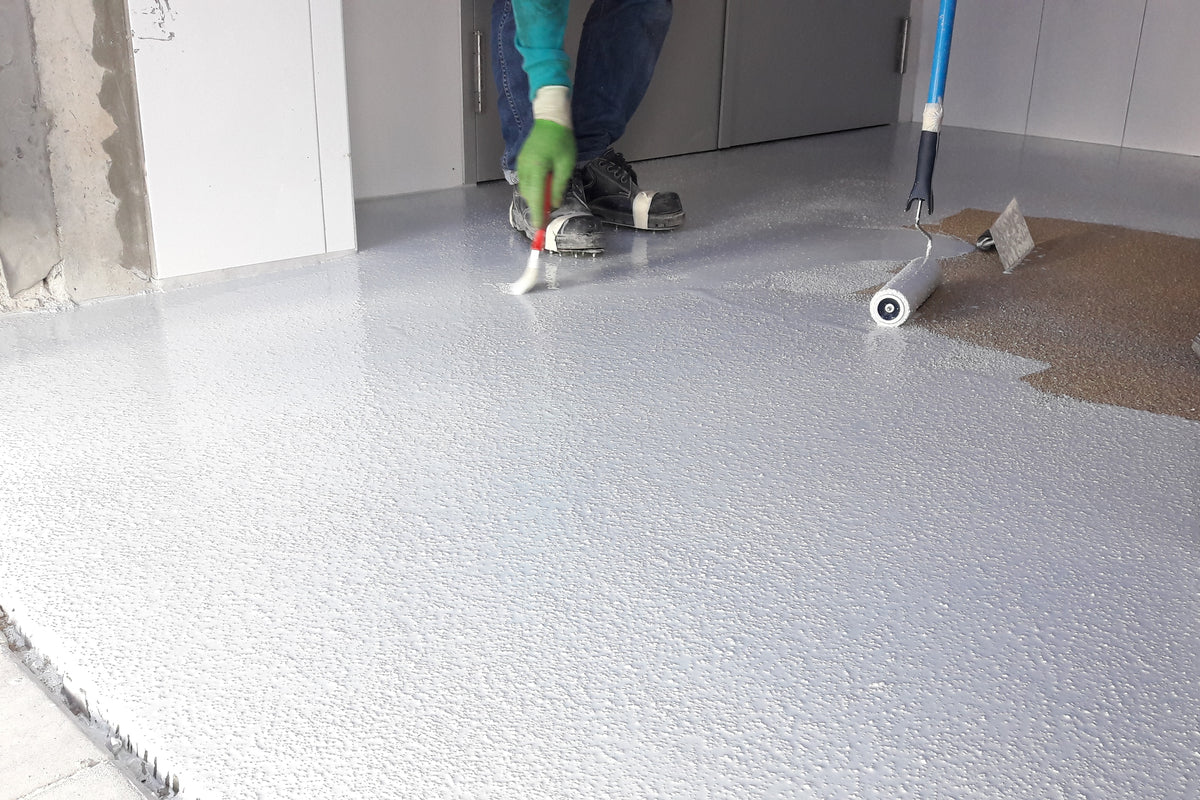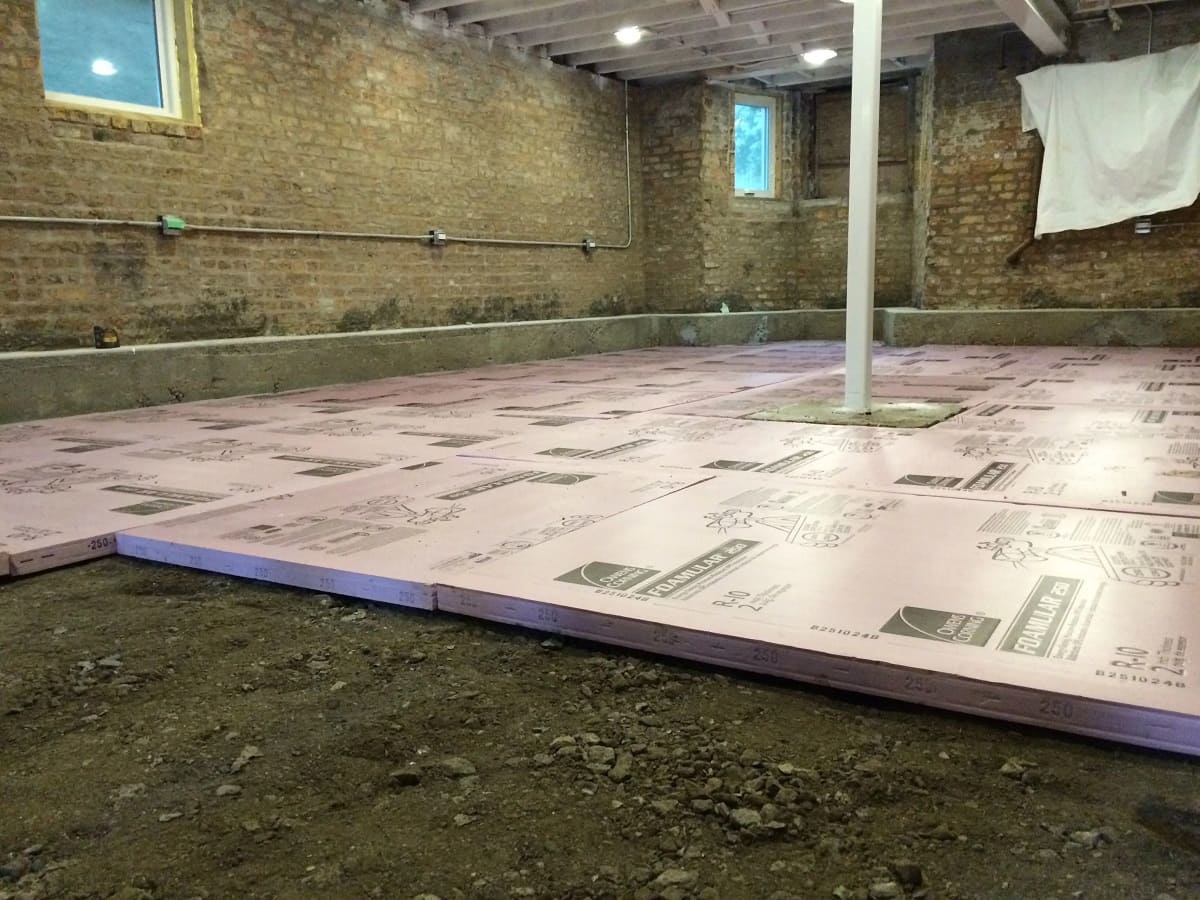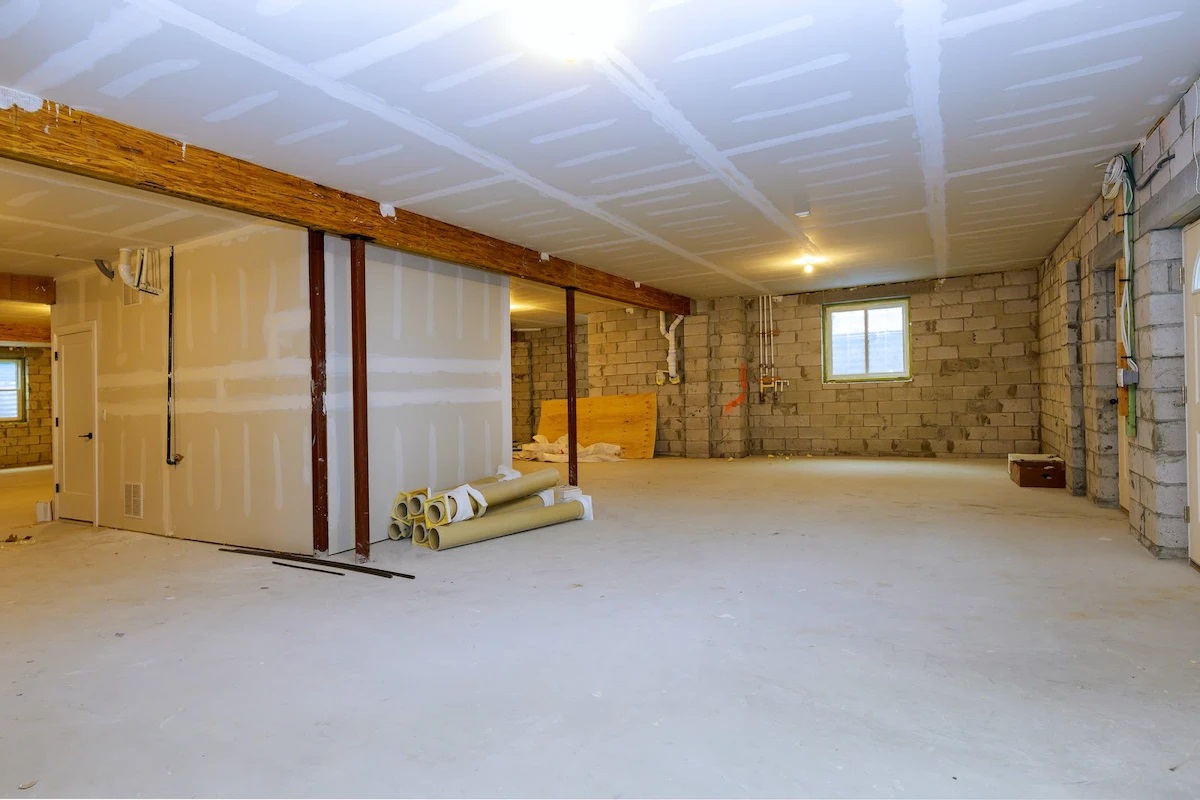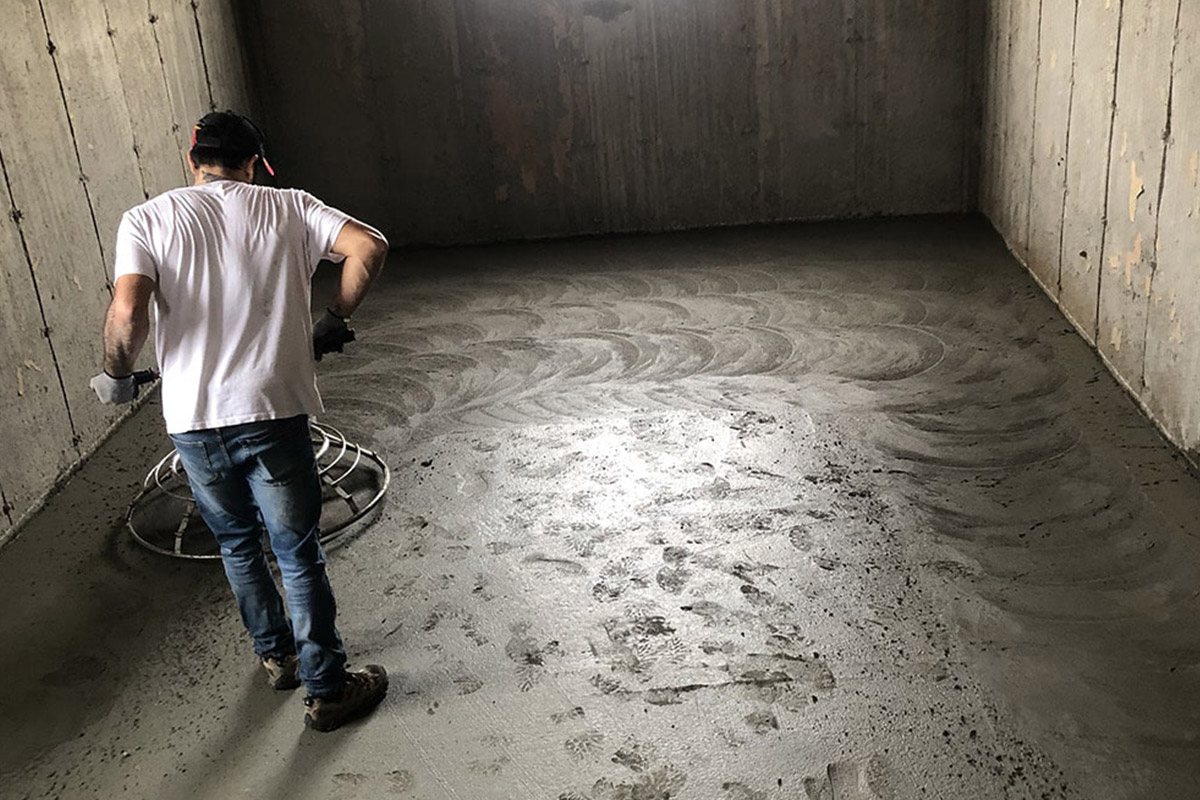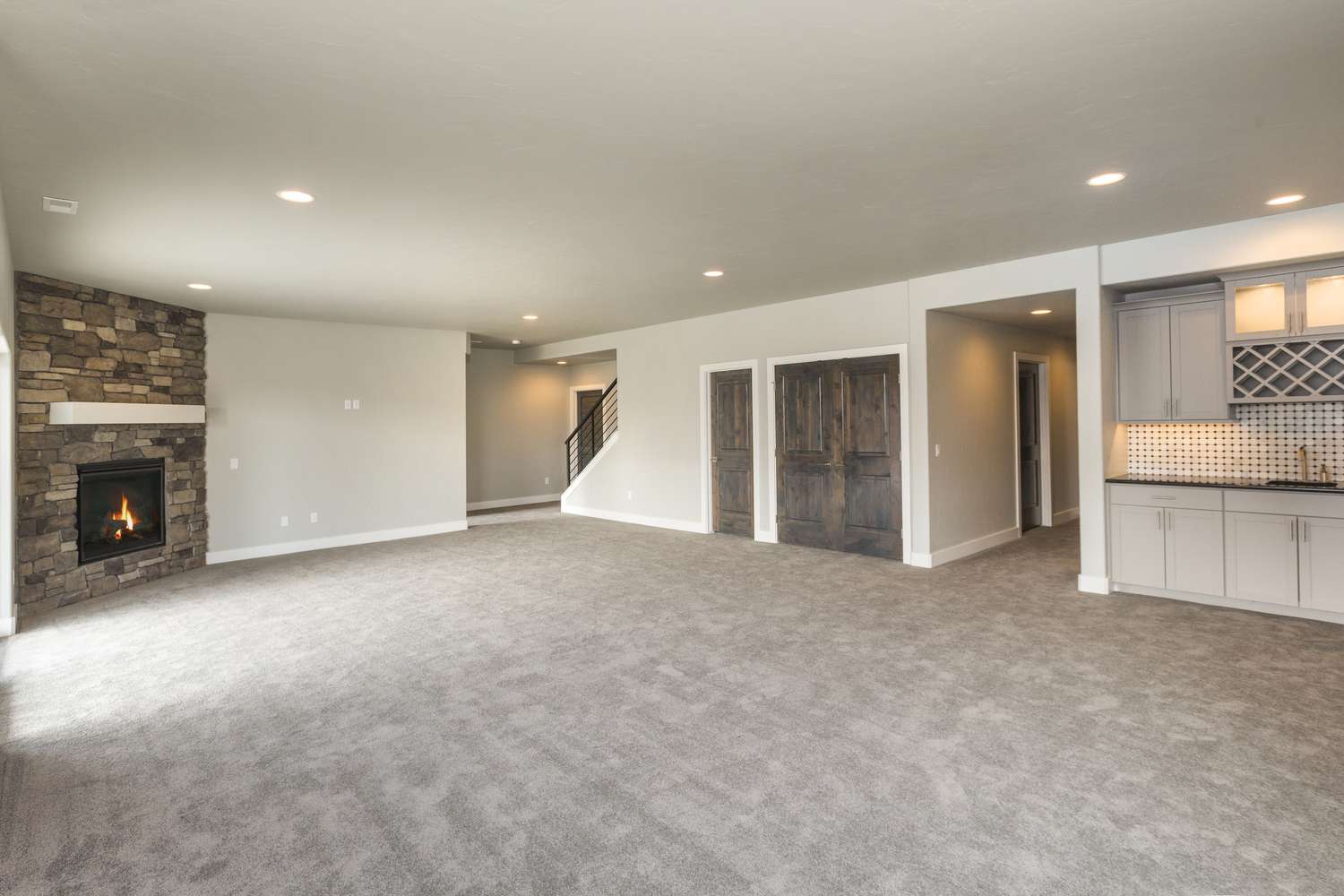

Articles
How To Carpet A Basement Floor
Modified: February 25, 2024
[How to Carpet a Basement Floor] - Step-by-step guide to carpeting your basement floor with expert tips and advice. Read our articles for a seamless and cozy basement transformation.
(Many of the links in this article redirect to a specific reviewed product. Your purchase of these products through affiliate links helps to generate commission for Storables.com, at no extra cost. Learn more)
Introduction
When it comes to finishing a basement, one of the key considerations is how to effectively carpet the floor. Carpeting not only adds warmth and comfort to the space but also helps to dampen noise and create a cozy atmosphere. Carpeting a basement floor may seem like a daunting task, but with the right approach and some basic knowledge, it can be a relatively straightforward DIY project.
In this article, we will guide you through the step-by-step process of carpeting a basement floor. From assessing the condition of your basement to selecting the appropriate carpet and installation techniques, we will cover everything you need to know to successfully carpet your basement.
Before diving into the specifics, it’s important to note that not all basements are suitable for carpet installation. Basements with moisture issues or prone to flooding may not be the best candidates for carpeting. Ensuring that your basement is dry and adequately sealed is crucial to avoid mold, mildew, and other potential moisture-related problems. If you have any concerns about the moisture levels in your basement, it is recommended to consult a professional before proceeding with carpet installation.
Now let’s get started with Step 1: Assessing the Basement.
Key Takeaways:
- Properly assessing the basement’s condition, choosing moisture-resistant carpet, and preparing the floor are crucial for a successful and long-lasting basement carpet installation.
- From measuring and cutting the carpet to securing it in place and adding finishing touches, each step contributes to achieving a professional and inviting carpeted basement space.
Read more: How To Carpet A Basement
Step 1: Assessing the Basement
Before you begin carpeting your basement floor, it is essential to thoroughly assess the condition of your basement. This step is crucial in identifying any potential issues that might affect the carpet installation process and the long-term durability of the carpet.
The first thing you should do is check for any signs of moisture or water damage in your basement. Look for damp spots, water stains, or a musty smell. Moisture issues can lead to mold and mildew growth, which can damage the carpet and pose health risks. If you notice any signs of moisture, it is important to address the problem before proceeding with carpet installation.
In addition to moisture, you should also inspect the basement floor for any cracks, uneven spots, or protruding nails. These can cause the carpet to wear unevenly or become damaged over time. If you spot any existing cracks or unevenness, consider repairing or leveling the floor before installing the carpet.
Furthermore, it is important to assess the overall levelness of the basement floor. An uneven floor can cause the carpet to bulge or ripple, affecting its appearance and longevity. Use a level tool to check for any significant deviations and determine if floor leveling is required.
Another factor to consider is the type of subfloor in your basement. Subfloors, such as concrete or plywood, provide a stable base for the carpet installation. Take note of the subfloor material and its condition, as it may require appropriate preparation or additional layers, such as carpet padding, to ensure optimal comfort and durability.
Lastly, take into account the basement’s usage and foot traffic. If your basement serves as a high-activity area, such as a playroom or home gym, you may want to choose a more durable and stain-resistant carpet option to withstand the heavy use.
By thoroughly assessing your basement, addressing any moisture or structural issues, and considering your specific needs, you can ensure that your carpet installation process goes smoothly and that your basement floor is ready for the next steps.
Step 2: Preparing the Floor
Preparing the basement floor is a crucial step in ensuring a smooth and long-lasting carpet installation. By properly preparing the floor, you can create a clean, level, and stable surface for the carpet to adhere to. Here are the key steps to follow when preparing your basement floor for carpet:
1. Clean the Floor: Start by thoroughly cleaning the basement floor. Remove any debris, dirt, or dust using a broom and vacuum. Make sure to pay extra attention to corners and hard-to-reach areas. If there are any spills or stains, consider using a suitable concrete cleaner to remove them.
2. Seal any Cracks: Inspect the floor for cracks or gaps and seal them using a high-quality concrete crack filler. This will help prevent moisture from seeping through and damaging the carpet. Allow the filler to dry completely before moving on to the next step.
3. Level the Floor: If you notice any uneven spots or dips in the basement floor, it is crucial to level them out. Use a self-leveling compound to fill in the low areas and create a smooth surface. Follow the manufacturer’s instructions for mixing and application, as the process may vary depending on the product.
4. Consider Moisture Barrier: If your basement has a history of moisture issues or you live in a particularly humid area, it is recommended to install a moisture barrier before laying the carpet. A moisture barrier, such as a plastic vapor barrier or waterproofing paint, helps prevent moisture from seeping up through the concrete and damaging the carpet. Consult with a professional to determine the best moisture barrier option for your specific situation.
5. Address Subflooring: Depending on the type of flooring in your basement, you may need to install a subfloor before laying the carpet. A subfloor can provide additional insulation, leveling, and noise reduction properties. Common subflooring materials include plywood, OSB (oriented strand board), or specialized subfloor panels. Ensure that the subfloor is properly installed and secured according to manufacturer’s instructions.
By following these steps and adequately preparing your basement floor, you are setting the foundation for a successful and durable carpet installation. Take the time to properly clean, seal, level, and consider any necessary moisture barriers or subflooring materials. This will help ensure that your basement floor is ready for the next stage of the carpeting process.
Step 3: Choosing the Right Carpet
Choosing the right carpet for your basement is an important decision that will impact the overall look, feel, and durability of the space. Since basements have specific considerations such as moisture levels and potential flooding, it is crucial to select a carpet that can withstand these conditions. Here are some factors to consider when choosing the right carpet for your basement:
1. Carpet Fiber: Start by considering the type of carpet fiber that is best suited for your basement. Synthetic fibers such as nylon or polyester are popular choices for basement carpets as they are moisture-resistant, durable, and easy to clean. Avoid natural fibers like wool, as they can be more susceptible to damage from moisture and require special care.
2. Moisture Resistance: Look for carpets that have moisture-resistant properties. This can be achieved through the use of stain-resistant treatments or carpets with built-in moisture barrier backings. These carpets are designed to repel moisture and prevent it from seeping into the carpet fibers or underlying padding, which can lead to mold and mildew growth.
3. Pile Height: Consider the pile height of the carpet, which is the length of the carpet fibers. In basements, it is generally recommended to choose a low-pile or Berber carpet, as they are easier to clean and less likely to trap moisture. Low-pile carpets also tend to hold up better in high-traffic areas and are less prone to matting or crushing.
4. Padding: Don’t overlook the importance of selecting the right carpet padding for your basement. Carpet padding provides cushioning, insulation, and helps absorb impact. Choose a padding that is specifically designed for basement use, as it should have moisture-resistant properties to prevent water from seeping into the padding and causing damage to the carpet and subfloor.
5. Style and Design: Consider the overall style and design of your basement when choosing the carpet. Opt for colors and patterns that complement the existing decor and create the desired atmosphere. Lighter colors can help make the space feel larger, while darker colors can provide a cozy and warm ambiance.
6. Budget: Set a budget for your basement carpet and explore different pricing options. Keep in mind that while it may be tempting to choose the lowest-priced carpet available, investing in a higher-quality and more durable carpet can save you money in the long run by reducing the need for frequent replacements.
By taking into account these factors and carefully selecting the right carpet for your basement, you can ensure a flooring choice that is both functional and aesthetically pleasing. Remember to prioritize moisture resistance, durability, and proper padding to create a comfortable and long-lasting carpeted basement floor.
Step 4: Installing Carpet Padding
Installing carpet padding is a crucial step in the carpeting process as it provides additional cushioning, insulation, and helps extend the life of your carpet. Carpet padding, also known as underlay, is typically made from foam or rubber and is placed between the subfloor and the carpet. Here’s a step-by-step guide to installing carpet padding in your basement:
1. Measure and Cut: Start by measuring the dimensions of your basement floor to determine the amount of carpet padding needed. Ensure that you leave a few inches of padding around the edges to ensure a proper fit. Once you have the measurements, cut the padding to size using a utility knife or a specialized padding cutter, following the manufacturer’s instructions.
2. Clean the Floor: Thoroughly clean the basement floor to remove any debris, dust, or moisture. A clean surface will ensure proper adhesion of the padding and prevent any potential issues down the line.
3. Roll Out the Padding: Unroll the carpet padding across the floor, making sure it covers the entire area. Trim any excess padding if necessary.
4. Butt the Edges: Butt the edges of the padding tightly against one another, ensuring there are no gaps or overlaps. Use a duct tape or special carpet padding tape to join the edges together securely.
5. Secure the Padding: Once the padding is in place, use a staple gun or double-sided carpet tape to secure it to the subfloor. Start at one end and work your way across the room, ensuring the padding is secure and taut. Space the staples or tape approximately 6-8 inches apart along the perimeter and in the center to ensure even distribution.
6. Trim Excess Padding: Trim any excess padding that extends beyond the edges of the room using a utility knife or scissors, ensuring a clean and neat appearance.
7. Inspect and Test: Take a moment to inspect the installed padding to ensure there are no visible gaps, wrinkles, or loose edges. Walk across the padding to test its stability and comfort. Make any necessary adjustments or repairs before moving on to the next step.
By installing carpet padding in your basement, you are providing an additional layer of comfort, insulation, and protection for your carpet. A properly installed padding will help extend the lifetime of your carpet and enhance its performance in terms of sound insulation and durability. Follow these steps carefully to ensure a smooth and successful installation process.
Before carpeting a basement floor, make sure the floor is clean, dry, and level. Use a moisture barrier to prevent mold and mildew, and consider using carpet tiles for easier installation and maintenance.
Read more: How To Install Carpet In A Basement
Step 5: Measuring and Cutting the Carpet
Properly measuring and cutting the carpet is a crucial step in ensuring a precise and professional-looking installation. Accurate measurements and precise cuts will help you minimize waste and achieve a seamless finish. Here’s a step-by-step guide on how to measure and cut the carpet for your basement:
1. Measure the Room: Start by measuring the dimensions of your basement floor using a tape measure. Measure the length and width of the room, making sure to account for any nooks or irregularities. It’s a good idea to add a few extra inches to each measurement to ensure you have enough carpet to work with.
2. Plan the Layout: Take into consideration the direction of natural light, furniture placement, and any focal points in the room. Determine the best orientation for the carpet installation, whether it’s parallel or perpendicular to the longest wall or based on any specific design considerations.
3. Mark the Carpet: Using a chalk or a marker, transfer the measurements onto the backside of the carpet. Start by marking the length and width of the room, ensuring accuracy. If necessary, divide the room into sections to accommodate any irregularities or angles.
4. Cut the Carpet: Lay the carpet on a sturdy surface with the backing facing up. Using a sharp utility knife or a carpet cutter, follow the marked lines and make precise cuts. Take your time and use a straight edge or a square to ensure clean and straight lines. Be cautious and watch your fingers while cutting.
5. Trim Excess and Shape: Once you have cut the carpet pieces to size, test fit them in the room. Trim any excess carpet that extends beyond the edges of the room using a utility knife or carpet cutter. Make any necessary adjustments to ensure a proper fit around corners and obstacles.
6. Match Pattern (If Applicable): If you are working with a patterned carpet, pay attention to matching the pattern at the seams. Align the patterns carefully to create a seamless and visually appealing finish. This may require additional cutting and trimming to ensure a perfect match.
7. Label and Roll: As you cut each piece of carpet, label them with corresponding room sections or order of installation. Roll each piece tightly with the carpet facing out to prevent any wrinkles or damage during transportation and installation.
By carefully measuring and cutting the carpet to fit your basement floor, you can achieve a professional and seamless installation. Pay attention to accuracy, use sharp cutting tools, and take your time to ensure clean and precise cuts. Planning, marking, and cutting the carpet accurately will make the installation process smoother and help you achieve the desired look for your basement.
Step 6: Securing the Carpet
Securing the carpet is the next step in the carpeting process and involves attaching the carpet to the floor to ensure it stays in place and remains taut. Properly securing the carpet will not only enhance its appearance but also prevent tripping hazards and ensure longevity. Here’s a step-by-step guide on how to secure the carpet in your basement:
1. Prepare the Tack Strips: Start by installing tack strips around the perimeter of the room. Tack strips are wooden strips with small, angled nails or tacks that grip the carpet backing. Place the strips with the angled side facing the wall, leaving a slight gap between the strip and the wall to accommodate the carpet. Cut the strips to the appropriate length and use a hammer and nails to securely fasten them to the subfloor.
2. Install the Carpet: Lay the carpet onto the floor, making sure it extends past the walls and covers the tack strips. Use a knee kicker or power stretcher to stretch the carpet towards the walls and hook it onto the tack strips. Start in one corner of the room and work your way across, stretching and hooking the carpet onto the strips. Use a carpet stretcher to ensure the carpet is tight and smooth across the entire floor.
3. Trim Excess Carpet: Once the carpet is securely hooked onto the tack strips, use a carpet knife to trim any excess carpet that extends beyond the walls. Cut along the wall, tucking the edge of the carpet into the gap between the tack strip and the wall for a neat and finished appearance.
4. Secure Seams (If Applicable): If you have multiple pieces of carpet that need to be seamed together, use a carpet seaming iron and seam tape to join them. Place the tape adhesive-side up underneath the seam and heat it with the seaming iron to activate the adhesive. Press the carpet edges onto the tape, ensuring a tight bond. Trim any excess carpet from the seam using a carpet knife.
5. Trim and Reattach Thresholds: If there are any thresholds or transition strips between rooms or floor types, trim the carpet to fit around them. Use a carpet knife to make precise cuts and reattach the thresholds/reducers with adhesive or screws, ensuring they are secure and flush with the carpet surface.
6. Inspect and Tuck: Take a moment to inspect the entire carpeted area for any visible wrinkles, loose edges, or unevenness. Use a knee kicker or a carpet tucker to make any necessary adjustments. Ensure the carpet is tightly secured to the tack strips and that there are no tripping hazards or loose areas.
7. Trim Excess Padding: If there is any excess carpet padding visible at the edges, trim it using a utility knife or scissors. Make sure the padding is not visible from the surface and that the carpet sits evenly against the floor.
By following these steps, you can effectively secure the carpet in your basement and achieve a professional and polished result. Properly stretching, trimming, and attaching the carpet will ensure a durable and visually pleasing finish that will withstand regular use and maintain its appearance over time.
Step 7: Finishing Touches
The final step in carpeting your basement is adding the finishing touches to complete the installation and ensure a polished and cohesive look. These finishing touches will enhance the overall appearance and functionality of your carpeted space. Here are some important finishing touches to consider:
1. Trim and Tuck Edges: Take a close look at the edges of the carpet where it meets the walls or other flooring surfaces. Ensure the carpet is trimmed neatly and tucked securely against the baseboards or transitions strips. Use a carpet knife or trimmer to make precise cuts and create a clean and seamless edge.
2. Install Carpet Thresholds: If there are any doorways or transitions between rooms with different flooring surfaces, install carpet thresholds or transition strips. These will provide a seamless transition between the carpeted area and other flooring types. Secure the thresholds in place using adhesive or screws, following the manufacturer’s instructions.
3. Vacuum and Clean: Once the carpet is securely installed, vacuum the entire surface thoroughly to remove any loose fibers, dirt, or debris. This will help fluff up the carpet and leave it looking clean and fresh. Additionally, consider deep cleaning the carpet periodically to maintain its appearance and remove any stains or odors.
4. Arrange and Anchor Furniture: If you have furniture in your basement, carefully arrange it on the newly carpeted floor. Use furniture pads or glides to prevent damage to the carpet fibers and anchor heavy furniture pieces securely to avoid sliding or shifting on the carpet surface.
5. Add Rugs or Mats: Consider adding rugs or mats in high-traffic areas or underneath furniture to protect the carpet and add extra comfort and style to the space. These can help prevent excessive wear and tear on the carpet and provide an additional layer of insulation.
6. Regular Maintenance: Establish a regular maintenance routine to keep your carpet in top condition. This can include regular vacuuming, spot cleaning, and occasional deep cleaning. Follow the manufacturer’s instructions for maintenance and care to prolong the life and appearance of your carpet.
7. Enjoy Your Carpeted Basement: With all the finishing touches in place, take a moment to appreciate your newly carpeted basement. Enjoy the comfort, warmth, and transformed space that the carpet has brought to your basement. Whether it’s a cozy living area, a playroom, or a home theater, the carpeted floor will enhance the overall ambiance and make the space more inviting.
By adding these finishing touches, you are putting the final touches on your basement carpet installation. These steps will ensure a visually appealing, functional, and well-maintained carpeted floor that you can enjoy for years to come. Take pride in your work and take the time to care for and maintain your carpet to keep it looking its best.
Conclusion
Carpeting a basement floor can significantly transform the space, adding warmth, comfort, and style. By following the step-by-step guide outlined in this article, you can successfully carpet your basement and create a functional and inviting environment. From assessing the condition of your basement to choosing the right carpet, preparing the floor, installing carpet padding, measuring and cutting the carpet, securing it in place, and adding the finishing touches, each step plays a crucial role in achieving a professional and long-lasting result.
During the process, it is important to assess the basement for any moisture or structural issues, taking the necessary steps to address them before proceeding with the carpet installation. Choosing the right carpet that is moisture-resistant, durable, and complements your basement’s design is key to ensuring longevity and performance. Proper preparation of the basement floor, including cleaning, sealing cracks, leveling, and considering moisture barriers and subflooring materials, will create a solid foundation for the carpet installation.
Once the preparation is complete, accurately measuring and cutting the carpet, securing it to the floor using tack strips and stretching techniques, and trimming and tucking the edges will result in a polished and professional finish. Adding the final touches, such as installing thresholds, vacuuming, arranging furniture, and regular maintenance, will further enhance the look and function of your carpeted basement.
Remember, while carpeting a basement floor can be a DIY project, it is crucial to assess your abilities and consult professionals for guidance if needed. They can provide valuable insight and expertise to ensure a successful installation.
With the completion of each step, you are one step closer to enjoying a comfortable and inviting basement. So go ahead and take the leap, transforming your basement into a cozy and stylish space with a beautifully carpeted floor.
Frequently Asked Questions about How To Carpet A Basement Floor
Was this page helpful?
At Storables.com, we guarantee accurate and reliable information. Our content, validated by Expert Board Contributors, is crafted following stringent Editorial Policies. We're committed to providing you with well-researched, expert-backed insights for all your informational needs.
